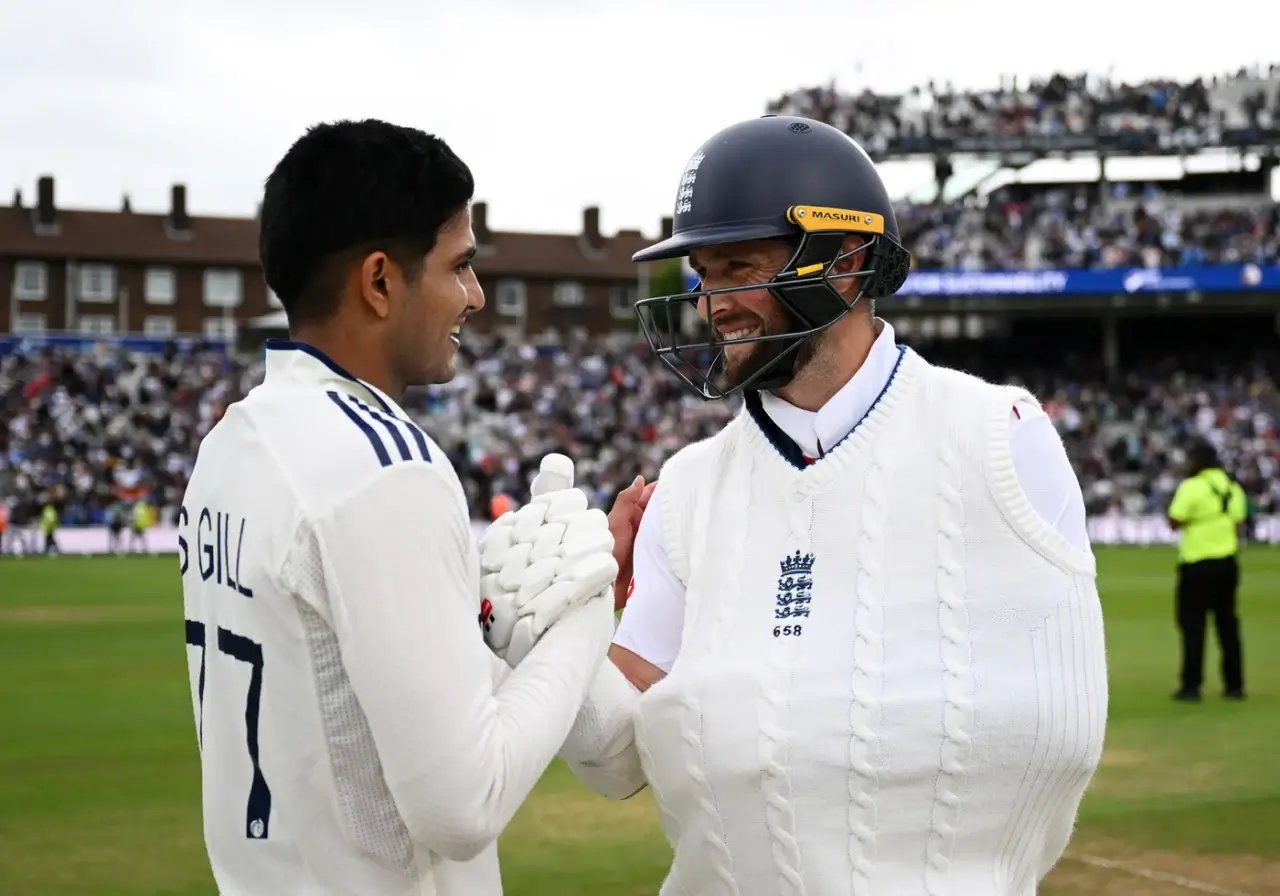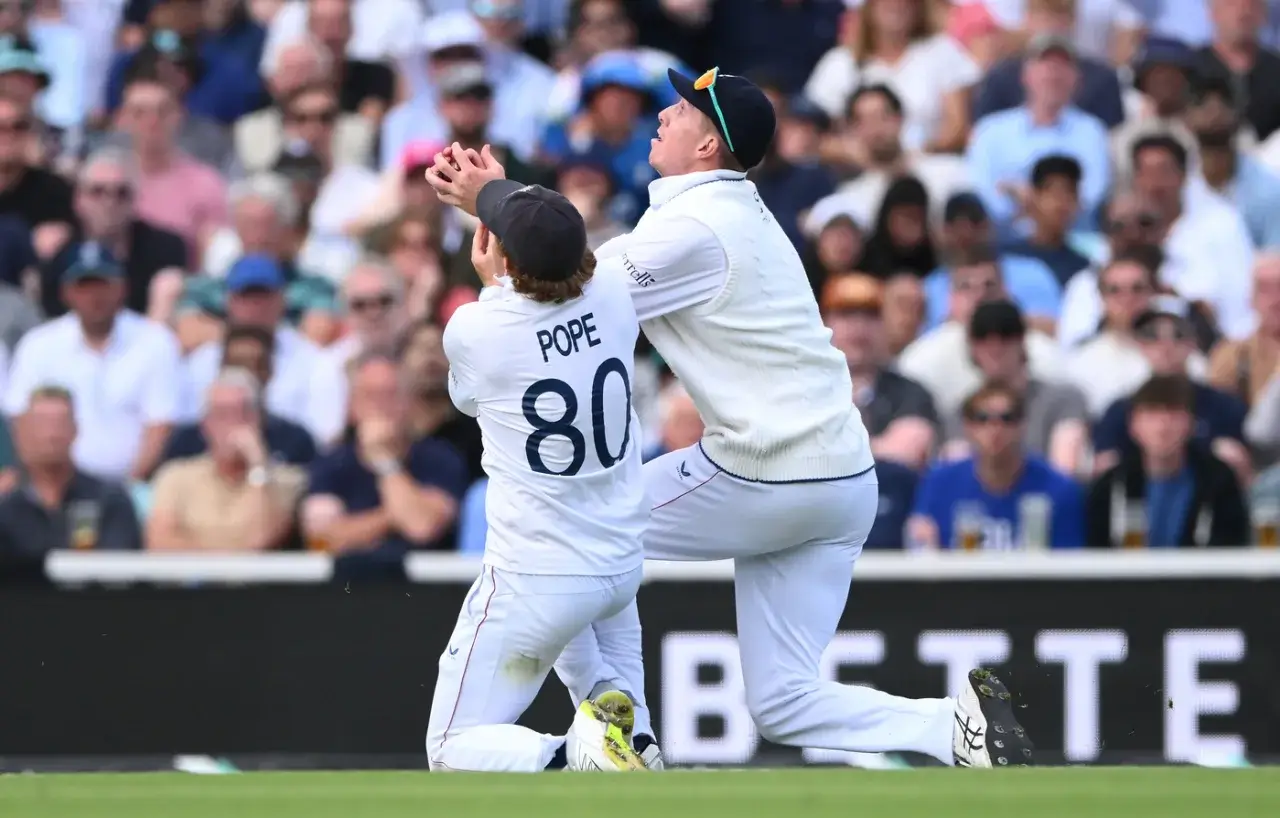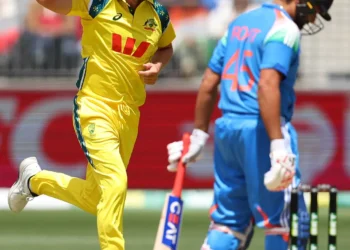England’s recent Test series against India was a thrilling affair, ending in a 2-2 draw after India’s narrow six-run victory at The Oval. Head coach Brendon McCullum has shared his thoughts, admitting there’s room for improvement, particularly in fielding and handling injuries. This article explores McCullum’s reflections, key moments from the series, England’s fielding struggles, the impact of injuries, and how these lessons will shape their preparation for the Ashes. With the series fresh in mind, we’ll see how England plans to bounce back stronger.
McCullum’s Reflections
McCullum praised his team’s effort but highlighted fielding as a major area needing work. He noted, “We didn’t catch very well in this game,” pointing to 15 dropped catches across the series, costing them crucial runs. Despite the draw, he believes India deserved the final win, saying, “They played better cricket.”
McCullum is proud of England’s fight but sees this as a learning opportunity, especially with the Ashes looming in November 2025. He plans to review the series to fine-tune strategies, focusing on consistency and pressure handling, after the CT 2025.
Key Series Moments
The series had many exciting moments. At Leeds, England’s openers Zak Crawley and Ben Duckett started strong, but Jasprit Bumrah’s bowling turned the game. Joe Root’s century at Lord’s was brilliant, yet India’s lower order, led by Ravindra Jadeja, fought back. Headingley saw England’s spinners Jack Leach and Tom Hartley take 10 wickets, but India’s depth kept them in contention.
The Old Trafford draw was marred by dropped catches, and The Oval’s final session saw Mohammed Siraj’s heroics secure India’s win. Each match showcased Test cricket’s drama.
Fielding and Injuries Impact
England’s fielding was a weak link, with 15 dropped catches, including six at The Oval, costing 152 runs. McCullum admitted, “Sometimes dropped catches happen and one leads to another,” affecting momentum. Injuries also hurt, with Ollie Pope’s shoulder issue, Ben Stokes’ knee trouble, and Jofra Archer’s absence due to an elbow injury.
Despite this, Chris Woakes bowled through pain in the final Test, showing resilience. These challenges forced England to adapt, highlighting the need for better fitness management ahead.
Looking Ahead to the Ashes
With the Ashes in Australia starting in November 2025, McCullum is already planning. He said, “We’ll digest this series, then work out how to keep improving.” The draw shows potential but also flaws, like fielding and injuries, that need fixing. The India star players are going to focus now on the Duleep Trophy 2025.
Australian pitches will test England’s “Bazball” style, and McCullum aims to ensure his team is sharp. The series against India is a stepping stone, with white-ball cricket against South Africa and Ireland in September offering preparation time. England’s goal is to win in Australia, a feat they haven’t achieved since 2010-11.
Detailed Analysis of Brendon McCullum’s Reflections and England’s Series Against India

The series, comprising five Tests, saw India clinch a narrow six-run victory in the final Test at The Oval, their closest win by runs in Test history. Brendon McCullum, England’s head coach since the start of 2025, shared his insights post-series, emphasizing areas for improvement ahead of the Ashes series against Australia, scheduled for November 2025.
This survey note delves into McCullum’s comments, key series moments, England’s fielding issues, injury impacts, and future preparations, ensuring a comprehensive analysis for cricket enthusiasts and analysts.
McCullum’s Assessment and Coaching Philosophy
McCullum’s post-series reflections, as reported by Vithushan Ehantharajah, highlight a balanced view of England’s performance. He acknowledged, “We know we’ve got room to improve,” indicating a proactive approach to coaching. McCullum noted the series was “combative” and “took its toll with injuries,” yet he expressed pride in his team’s efforts, stating, “I’m really proud of the guys and their efforts.”
His focus is on digesting the lessons, particularly fielding, where England dropped 15 catches, costing them 152 runs in the final Test alone. McCullum’s philosophy, often termed “Bazball” for its aggressive, fearless style, seems to be under scrutiny, with calls for fine-tuning, especially after failing to secure a series win against India since 2018.
His Plans
McCullum’s immediate plans involve reviewing the last seven weeks to identify what worked and what didn’t, with a primary aim to prepare for the Ashes. He mentioned, “We’ll let this one sit, we’ll digest it,” suggesting a reflective approach.
His role as an overarching coach, overseeing both Test and white-ball cricket, adds complexity, with upcoming series against South Africa and Ireland in September 2025 providing a decompression period before focusing on Test cricket.
This dual responsibility underscores his strategic vision, aiming to ensure England is “sharp” for Australia, as he stated, “When we do arrive out in Australia, we give ourselves a huge chance.” Fans and analysts alike will watch closely, with the Ashes promising another chapter in this cricketing rivalry, as detailed in India vs Zimbabwe for broader cricket insights.
Key Moments from the Series

The series was a showcase of Test cricket’s intensity, with each match offering distinct narratives. The first Test at Leeds saw England’s openers, Zak Crawley and Ben Duckett, set a brisk pace, but Jasprit Bumrah’s bowling turned the tide, taking key wickets. The second Test at Lord’s featured Joe Root’s magnificent century, yet India’s lower order, led by Ravindra Jadeja and Washington Sundar, frustrated England with a crucial partnership.
Headingley’s third Test saw England’s spinners, Jack Leach and Tom Hartley, share 10 wickets, but India’s batting depth, including contributions from lower-order batsmen, kept them competitive. The fourth Test at Old Trafford ended in a draw, marred by England dropping four catches in India’s first innings, allowing extra runs.
The final Test at The Oval was a thriller, with India securing a six-run win, driven by Mohammed Siraj’s heroic 90mph bowling in his 30th over, as McCullum noted, “Mohammed Siraj has the absolute heart of a lion.” These moments, detailed in related coverage like England vs India top moments, highlight the series’ competitiveness.
Statistics from the Series
| Aspect | England | India |
|---|---|---|
| Series Result | 2-2 Draw | 2-2 Draw (Won Final Test) |
| Dropped Catches | 15 (Total Series) | 8 (Total Series) |
| Key Injuries | Pope (Shoulder), Stokes (Knee), Archer (Elbow) | Minor Injuries, Full Squad |
| Top Batsman (Runs) | Joe Root (500+) | Yashasvi Jaiswal (400+) |
| Top Bowler (Wickets) | Chris Woakes (15) | Jasprit Bumrah (20) |
England’s Fielding Woes
Fielding emerged as a significant concern for England, with McCullum admitting, “We didn’t catch very well in this game but have caught really well over the last few years.” The series saw England drop 15 catches, with six in India’s second innings at The Oval, costing an estimated 152 runs.
This issue was particularly evident in the fourth Test at Old Trafford, where four dropped catches allowed India to post a competitive total, and at The Oval, where missed opportunities in the field shifted momentum.
McCullum attributed this to a chain reaction, saying, “Sometimes dropped catches happen and one leads to another,” suggesting psychological as well as technical factors. Improving fielding will be crucial, especially for the Ashes, where every run counts. Related articles, such as South Africa vs New Zealand, highlight the importance of sharp fielding in high-stakes matches, reinforcing England’s need for practice.
The Impact of Injuries
Injuries significantly impacted England’s performance, as McCullum noted, “Some of the best players have gone home injured.” Key absences included Ollie Pope with a shoulder injury, Ben Stokes managing a knee issue, and Jofra Archer ruled out due to an elbow injury, depriving England of his pace.
These injuries forced strategic adjustments, with players like Chris Woakes stepping up, bowling through pain in the final Test to take crucial wickets, as detailed in How Woakes defied injury. Despite resilience, the lack of fully fit players highlighted England’s depth issues, with McCullum emphasizing the need for better fitness management.
This aspect is critical for the Ashes, where Australia’s pace attack, led by players like Pat Cummins, will test England’s endurance, as seen in past series like Australia vs India.
Looking Ahead to the Ashes
The Ashes, starting in Perth in November 2025, is England’s next major challenge, and McCullum is already strategizing. He sees the 2-2 draw as a learning opportunity, stating, “We’re in the middle now, halfway through what we knew was going to be an unbelievable 12 months of Test cricket.”
The series against India, with its parallels to playing Australia, offers insights into handling pressure and maintaining consistency. McCullum’s focus is on fine-tuning, particularly fielding and injury management, to ensure England’s “Bazball” style adapts to Australian conditions.
White-ball series against South Africa and Ireland in September 2025 will provide decompression, but his primary aim is Test cricket readiness. Historical context, like England’s last Ashes win in Australia in 2010-11, underscores the challenge, with McCullum confident, “When we arrive in Australia, we’ll give ourselves a huge chance.” Related content, such as Ricky Ponting’s Captaincy, offers insights into Ashes strategies.
Conclusion
The series against India was a microcosm of Test cricket’s highs and lows, with England’s aggressive approach under McCullum showing promise but also revealing vulnerabilities. The 2-2 draw, while disappointing, offers a roadmap for improvement, with fielding and injuries as key areas.
As England prepares for the Ashes, McCullum’s reflective approach will be pivotal, ensuring lessons are learned and applied. The upcoming white-ball series will test adaptability, but the focus remains on Test cricket’s ultimate prize.

















